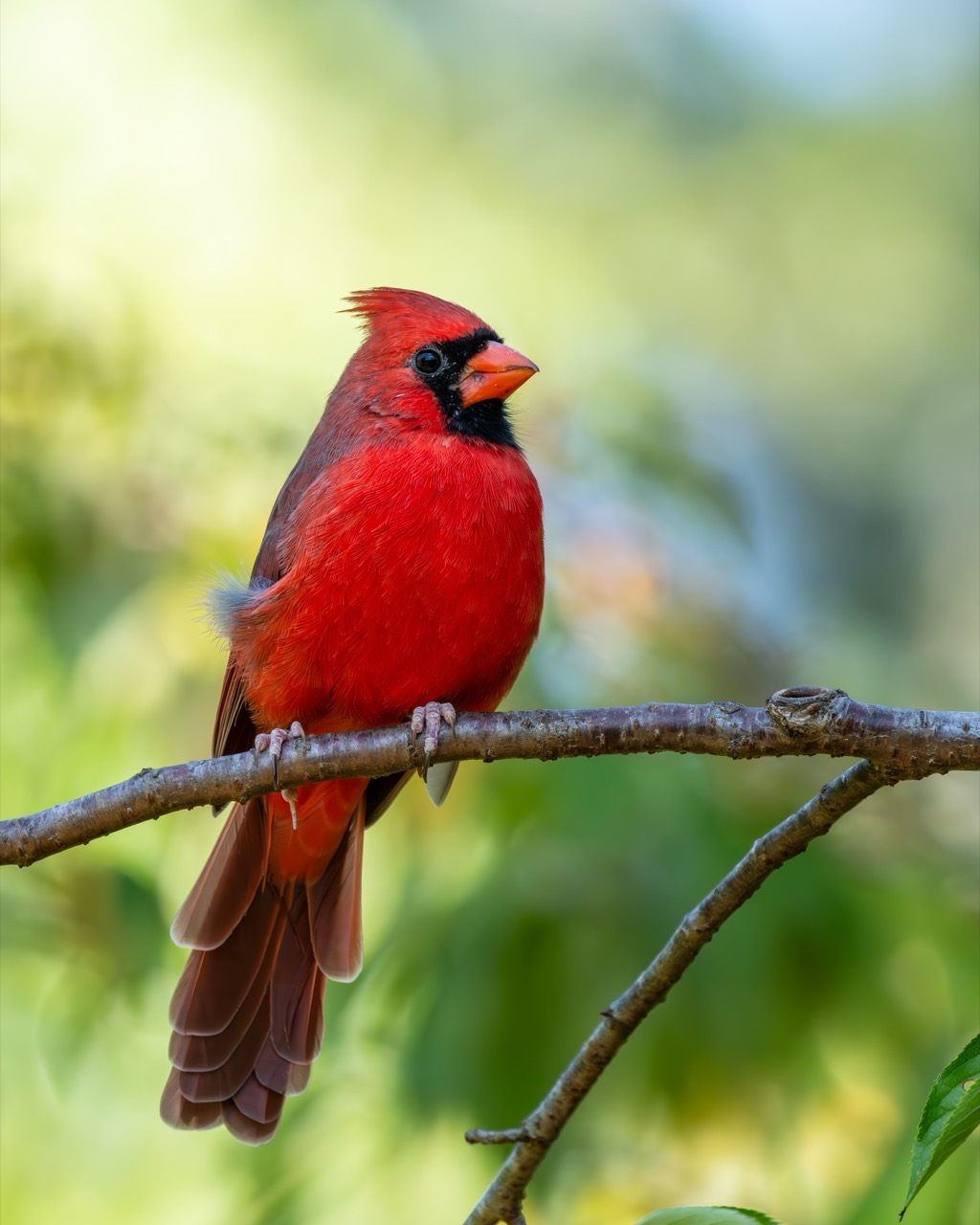The Northern Cardinal, or Cardinalis cardinalis, is more than just a common backyard bird; it’s a captivating symbol of beauty and resilience, brightening the gloomy days of winter with its vivid red plumage. Often simply referred to as the cardinal, this bird is favored among bird watchers and has even been designated as the state bird for seven U.S. states. Its striking appearance and melodious song make the Northern Cardinal a noteworthy subject of admiration and scientific interest.
Characteristics / Physical Description
The Northern Cardinal is instantly recognizable thanks to its brilliant red feathers, a coloration found predominantly in males. The females, while less flamboyant, display a charming mix of warm brown tones, accented with touches of red on the wings, tail, and crest. Both sexes have a distinctive black mask on their face, which extends from the beak to the throat. This bird species also features a prominent crest on top of their head and a thick, orange-red beak, which is not only a tool for foraging but also a pivotal characteristic during mate selection.
Taxonomy and Classification
Scientifically classified as Cardinalis cardinalis, the Northern Cardinal belongs to the family Cardinalidae. This family encompasses various species known for their bright plumage and robust songs. The cardinal’s genus name, ‘Cardinalis,’ is derived from the Latin word meaning ‘important,’ underscoring the bird’s prominent role in its habitat.
Behavior and Social Structure
Northern Cardinals are generally territorial and can be quite aggressive in defending their space during the breeding season. Outside of this period, however, they are more social and can be seen in pairs or small family groups. Cardinals do not migrate, choosing to brave the winter months by seeking shelter in thickets and shrubbery. Their song is a distinctive, cheerful whistle, which they use to communicate across dense foliage and during courtship.
Habitat and Distribution
This bird species is predominantly found in the eastern United States, though its range has expanded to the South and Southwest, including parts of Arizona and California. Cardinals favor environments that offer dense shelter such as edge habitats, gardens, shrublands, and wetlands.
Diet and Feeding Habits
Cardinals are omnivores but primarily feed on seeds, grains, and fruits. During the breeding season, they also consume insects and feed them to their young. Their strong beaks are perfect for cracking seeds and snipping through tougher materials, making them versatile foragers.
Breeding and Reproduction
Cardinalis cardinalis typically forms monogamous pairs, and the bond between mating pairs is strong, often lasting multiple breeding seasons. The female builds a nest in dense foliage, where she lays three to four eggs. Both parents are involved in feeding the young, which fledge about 9-11 days after hatching.
Relationship with Humans
The Northern Cardinal holds a beloved place in human culture, often featured in winter holiday motifs and bird feeding practices. Its presence in gardens is encouraged by bird feeders filled with seeds, which helps some populations thrive even in urban settings.
Evolutionary History
The cardinal’s lineage can be traced back to the Americas, where they evolved with a distinct coloration and song, likely as mechanisms for mating and territorial defense. Their adaptability to different habitats has played a crucial role in their survival and expansion across various regions.
Use as Research Animals
While not commonly used in laboratory research, the Northern Cardinal plays a significant role in ornithological studies. Researchers study their behavior, song patterns, and breeding practices to gain broader ecological insights and understand the impacts of urbanization on native species.
This exploration into the life of the Northern Cardinal reveals a bird as robust in survival as it is brilliant in appearance, making it a cherished subject both in backyards and scientific communities alike.

